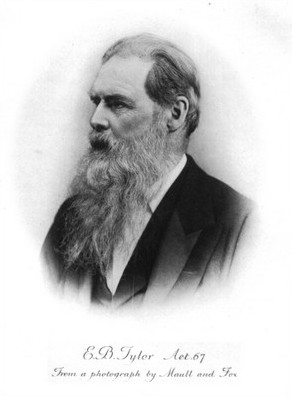When I first saw some women of Mennonite faith with their
simple and quaint bonnets. I did not understand the spiritual or historical
precedent these women had to cover their heads. I assumed that it was some
cultural expression of this group's separation from mainstream society.
Separation from a worldly society is certainly a valid theological motive for women
covering heads, but the issue is much deeper than that and applies to all women
of Christian faith.
 |
| Standard Christian Women's Head Covering |
Covering the History of Women's Head Coverings
.
Mennonite and Amish women equip themselves with what are
essentially prayer head coverings. These women wear head covering the majority
of the time as obedience to the concept of being in a constant state of prayer.
I realized that it was in obedience with 1 Cor. 11:3-16, which indicates that
men should not dishonor God by having their head covered. This would indicate
to those in that society that the man was under another authority besides
Christ. Women in service to the Church should honor God by covering her head to
show her acceptance and obedience to the authority of the Church and Christ.
The primitive Christian women veiled their heads in the church, but also when
they were in public as was the custom for most women of this period of time.
Looking to the historic context in which St Paul was speaking, I discovered that the
Christian women continued to maintain this practice of covering their heads
while at worship every century until the nineteenth and twentieth centuries.
During the 19th century, much of Christendom in the United
States and Western Europe
started to allege that the long hair constituted a sufficient head covering for
women in the sanctuary. Therefore, many concluded that the practice of women
covering her head in worship was a unnecessary burden to women of faith. Some
churches still saw the necessity of women covering their head when in the
church.
The rich and middle-class and women donned some rather
extravagant hats in place of prayer veils. Covering your head in the worship in
the Anglican Communion was more an indication of a Christian women's taste in
the millinery fashions of the moment ;then a statement of her modesty and
faith.The significance behind wearing hats was lost.
Today, the women Christians in the Eastern churches always cover their heads in the church. In the west, women of the more austere Christian separatist groups always come equipped the with a prayer veil in the church. This is true in congregations with many African American women, many of whom don hats at worship.
Today, the women Christians in the Eastern churches always cover their heads in the church. In the west, women of the more austere Christian separatist groups always come equipped the with a prayer veil in the church. This is true in congregations with many African American women, many of whom don hats at worship.
Some women in the "high church "wing of the
Anglican communion practice the wearing of veils when attending the Eucharist
and other worship services. Normally ,these Christian sisters do not cover
their heads when about their daily activities in public. Generally, in the west
today, exclusively women in Mennonite, of Amish, and of Hutterite sects always
practice the habit of covering their head when in public.
| Catholic Head Covering |
Understanding the Theological Context of Women Covering
their Heads in Worship
The need for this direction to the Christian gatherings at
ancient Corinth
better is understood when we realize that it was generalized then practice for
women of sound reputation to always be veiled in public. Only those women of
compromised sexual morals appeared bear headed in public.
Pagan priestesses, who served at pagan temples, followed
practice of removing their veils to speak supposedly inspired prophecy. They
dramatically removed their veils and to let their hair hang disheveled and
wild. This drama was for the benefit of the worshiper at the pagan temple. It
was proof the priestess had been in a divine trance. Certainly, such practices
the women of Christian communities did not want to become associated with this
kind of religious fraud. Paul sought to restore correct theological practice to
this individual Christian community.
Among the doctrinal truths expressed in the mass is the
hierarchical nature of the church. The church, the mystical body, is composed
of Christ the chief and those which were baptized in Christ, his members. The
corporal body of Christ is set in order for the proper functioning of the whole
church. The ministerial priesthood is, on the one hand "head" of lay
members of the body of Christ and the Servant to the lowest member of the Body
of Christ.
This truth is not sacramental discrimination against women;
rather the Lord's wish that the sacraments remind us is very real ways of the
obligations of all those in the body of Christ to serve and minister to one
another. We may as members of the body of Christ have a hard time showing
outward signs of the work of grace and sacrifice by the influence of the Lord
and His saints in our everyday lives.
Using the Sacraments to understand this concept will help
make us more inclined to charity to all of our brothers and sisters in Christ.
There is no Sacramental inequality between men and women in God's church. In
that liturgical, the sacramental order, normal distinction between the sexes
and in the marriage are not liturgically significant. In the baptism, there is
no more male or female (Galatians 3:28). Thus ,men and the women take part
today also in the life of the Church do so as spiritually equal baptized
members of the Body of Christ
Creating Sacred Space for Personal Piety by Covering Your
Head
While it is absolutely evident there are no canonical or
moral reason for women in the body of Christ today to cover their heads, it is
a wonderful expression of a Christian women's personal piety .It is a reminder
to herself and others of God's sacramental truths. It can be a preparation
psychologically for a busy distracted mother to put her thoughts towards God
and away from her daily obligations Still sister who chose to cover their heads
when they approach God's alter should not be in judgment of women who do not.
Women , for whom covering their head for worship has no significant spiritual
meaning; should also not judge the worship practices of women who chose to
cover their heads.

Jewish Women's Head Covering Public Domain


























